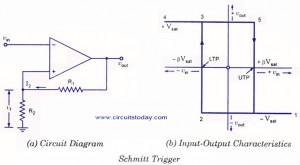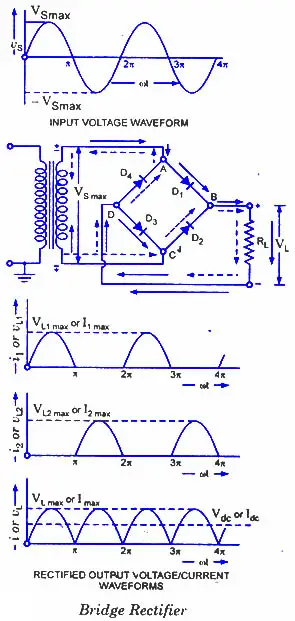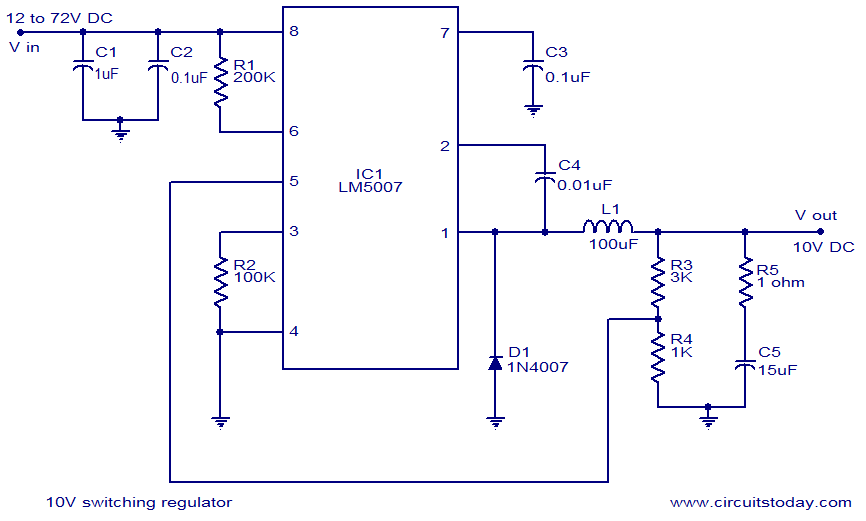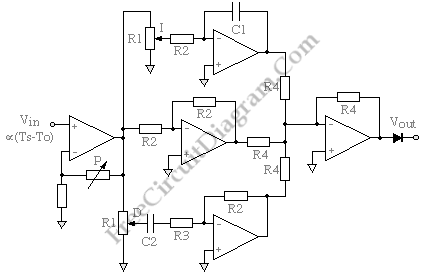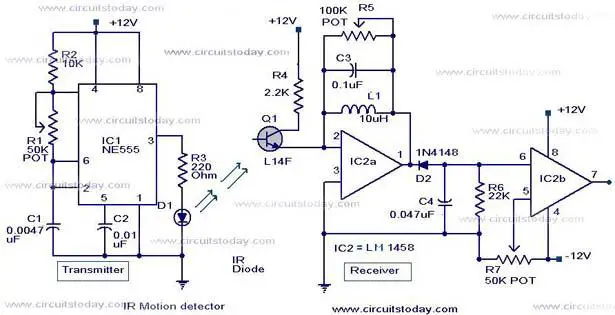 Here is the circuit diagram of an infrared motion detector that can be used to sense intrusions.Infra red rays reflected from a static object will be in one phase, and the rays reflected from a moving object will be in another phase.The circuit uses this principle to sense the motion.
Here is the circuit diagram of an infrared motion detector that can be used to sense intrusions.Infra red rays reflected from a static object will be in one phase, and the rays reflected from a moving object will be in another phase.The circuit uses this principle to sense the motion.
Custom Search
Friday, September 24, 2010
Infrared motion detector circuit
 Here is the circuit diagram of an infrared motion detector that can be used to sense intrusions.Infra red rays reflected from a static object will be in one phase, and the rays reflected from a moving object will be in another phase.The circuit uses this principle to sense the motion.
Here is the circuit diagram of an infrared motion detector that can be used to sense intrusions.Infra red rays reflected from a static object will be in one phase, and the rays reflected from a moving object will be in another phase.The circuit uses this principle to sense the motion.Schmitt Trigger using Op-Amp
The input voltage vin is applied to the inverting input terminal and the feedback voltage goes to the non-inverting terminal. This means the circuit uses positive voltage feedback instead of negative feedback, that is, in this circuit feedback voltage aids the input voltage rather than opposing it. For instance, assume the inverting input voltage to be slightly positive. This will produce a negative output voltage. The voltage divider feedsback a negative voltage to the non-inverting input, which results in a larger negative voltage. This feedsback more nega tive voltage until the circuit is driven into negative saturation. If the input voltage were, slightly negative instead of positive, the circuit would be driven into the positive saturation. This is the reason the circuit is also referred to as re generative comparator.
Full wave bridge rectifier
Dur ing this half of each input cycle, the diodes D2 and D4 are reverse biased and so the current is not allowed to flow in arms AD and BC. The flow of current is indicated by solid arrows in the figure. In the second half of the input cycle the lower end of ac supply becomes positive, diodes D,2 and D4 become forward biased and current flows through arm CB, enters the load at the positive terminal, leaves the load at nega tive terminal and returns back flowing through arm DA. Flow of current has been shown by dotted ar rows in the figure. Thus the direction of flow of cur rent through the load resistance RL remains the same during both half^eycles of the input supply voltage.
Air flow detector circuit.
Notes.
10V switching regulator using LM5007
The circuit diagram shown here is of a 10V switching regulator based on the LM5007 from National Semiconductors. The LM5007 is an integrated step down switching regulator which has all necessary systems required for making a cost effective and reliable switching regulator circuit. The IC is available in MSOP-8, LLp-8 packages and has a lot of built in features like thermal shut down, under voltage lock out, duty cycle limiting, current limiting etc.The output voltage of this regulator can be adjusted using the resistor R3 and R4. For the given values of R3 and R4 in the circuit diagram, the output voltage will be 10V. The equation governing the output voltage is Vout = 2.5 x (R3+R4)/R4. Resistor R1 sets the switch on time and C4 is the boost boot strap capacitor. Resistor R2 determines the variation of OFF time and C3 is a decoupling capacitor.
Notes.
- The supply voltage can be anything between 12 to 72V DC.
- Output voltage can be adjusted using R3 and R4.
- C1 and C5 are polyester capacitors.
- C1 and C2 must be rated at least 100V.
- R5 and C5 forms a filter network.
- The output current limit of LM5007 is 700mA.
Read more: http://www.circuitstoday.com/category/power-supplies#ixzz10TExkBTK
Under Creative Commons License: Attribution
Analog PID Controller
The circuit diagram below shows us about a form of PID controller. The input signal is buffered and amplified by a non-inverting amplifier and the gain of this stage defines the proportional gain P of the controller.The amplified error signal passes in parallel through an integrator (top) a unity-gain amplifier (middle) and a differentiator (bottom) all of which have inverting behaviour. The final op-amp sum and invert the outputs and passed to the output.
The potentiometers labeled D and I control the proportions in which derivative and integral fractions contribute to the output signal which is proportional to the power W to be supplied to the heater.t is most likely to be troublesome by causing an offset between the set-point and oven temperatures.
Under some circumstances the integrator may drift and eventually saturate which would prevent it from working properly. To reduce the impact of op-amp offset and bias, the first thing to try would be a resistor, equal in value to R2, between the positive input of the integrating op-amp and ground to eliminate the common-mode bias current. Selecting an op-amp with a good input-offset performance would be the next step.
Light detector using a relay
Following circuit is same as the above mentioned dark detector. In this case, the configuration of relay has been changed. Now, NO (Normally open) terminal has been left open. In normal case, the D1-LED remains ON. When light falling on LDR is interrupted, pole of relay connects to NO terminal. Hence, NC (Normally connected) terminal does not get power and that switches the D1- LED off.
Dark detector using a relay
Subscribe to:
Comments (Atom)
